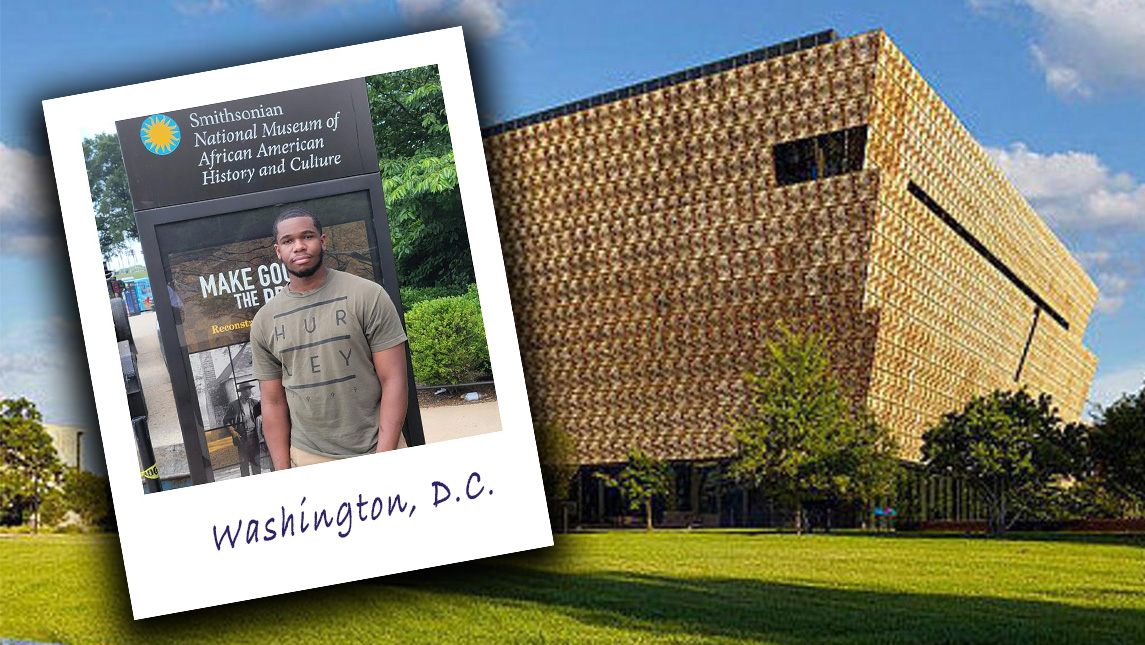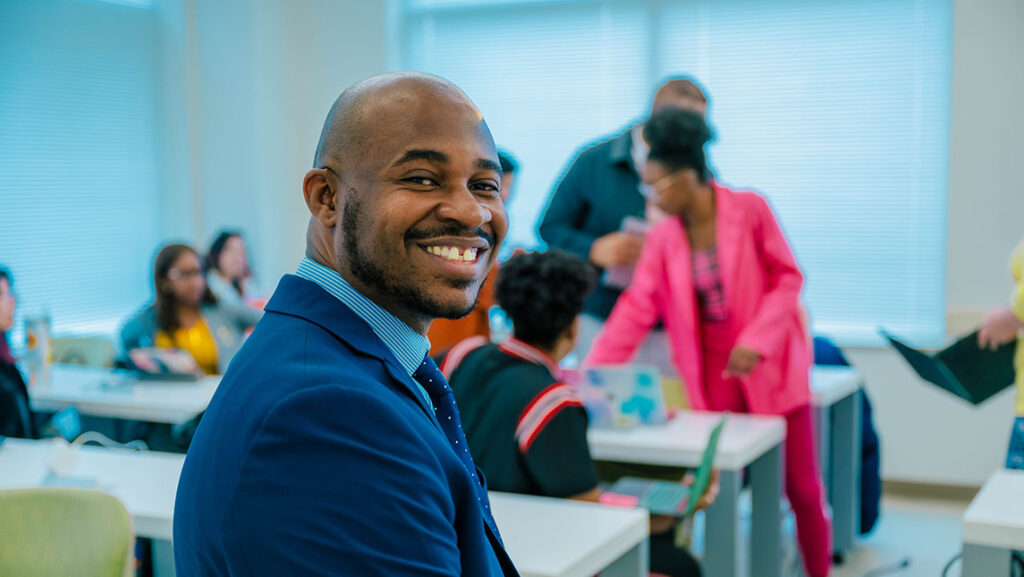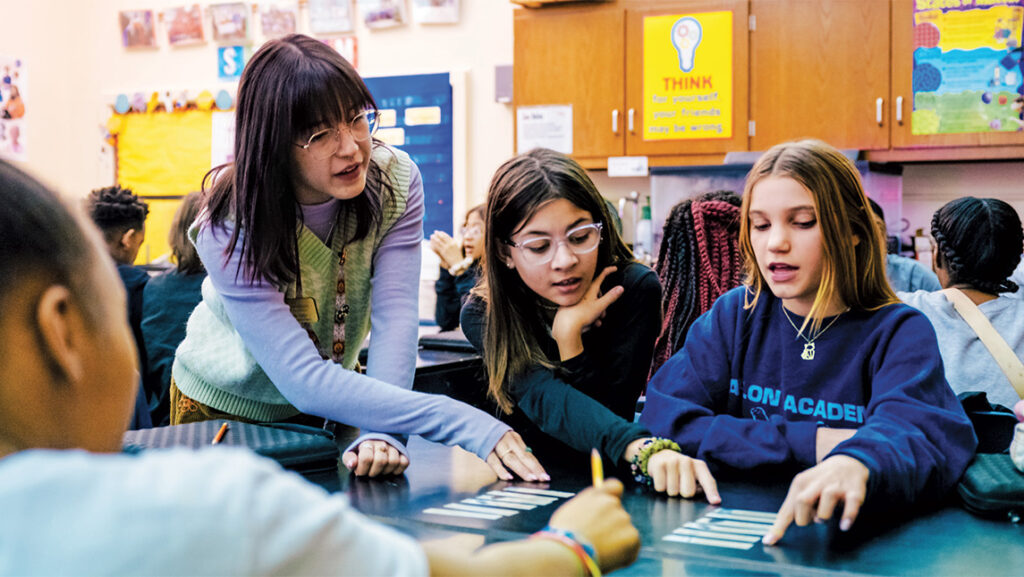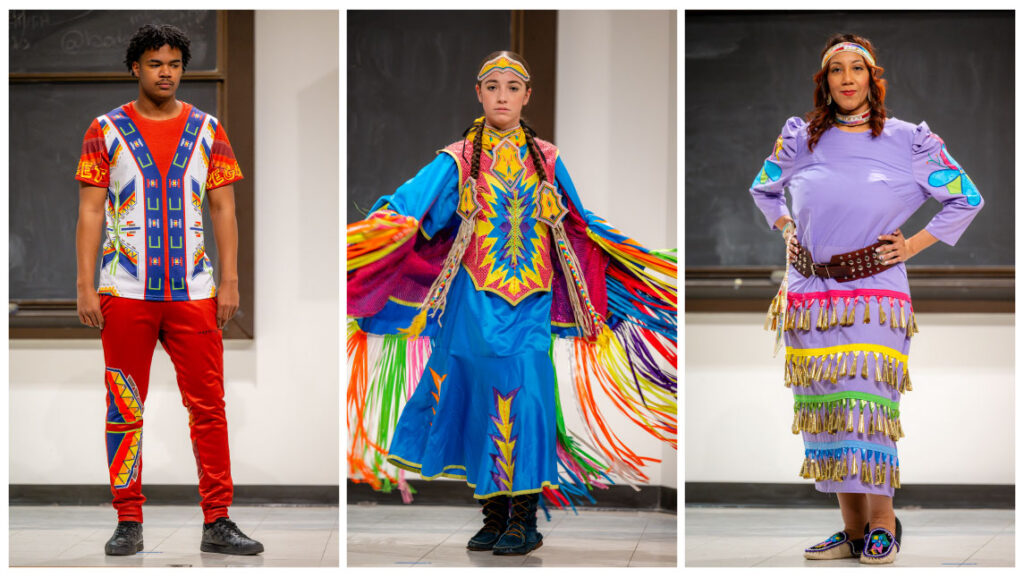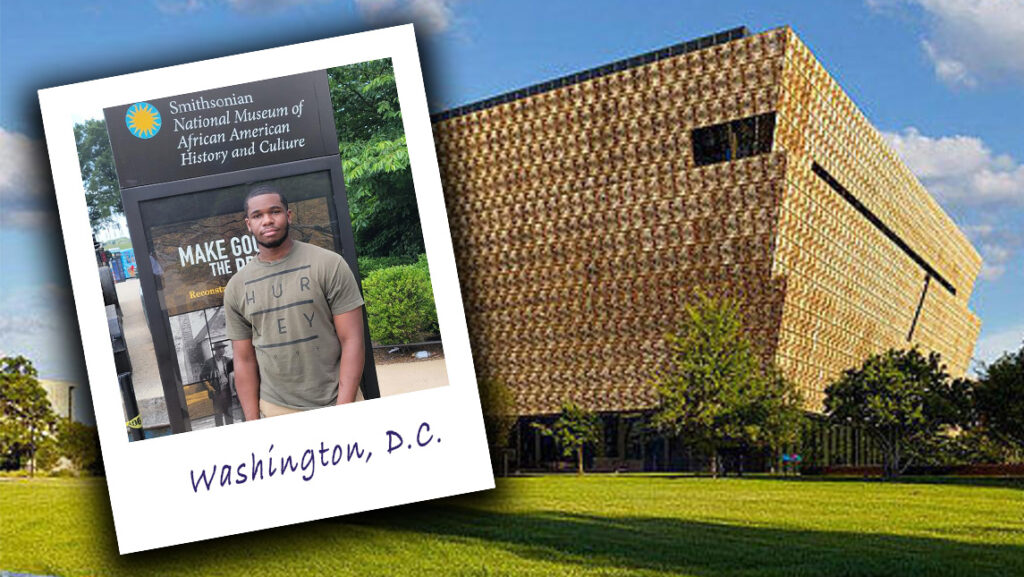
In 2017, 2.4 million people visited the Smithsonian’s National Museum of African-American History and Culture in Washington, DC. Sixteen-year-old John Cooper and his family were among them.
This summer, he earned an internship at the museum, the same place that inspired him to pursue a master’s in museum studies at UNC Greensboro.
“My parents always told me to make my passion into a career,” he says.
One of those passions has been genealogy, ever since his father introduced him to Alex Haley’s “Roots.” He focused his oral history project at UNCG on his grandfather, a Korean War veteran. “My family and I learned information about him that he never shared about his life, especially regarding the war. My family inspires me to continue my education, even when it’s tough and challenging.”
The internship at the Smithsonian gave him a chance to share his passion with others as one of his jobs was helping the Family History Center design virtual programs and workshops.
Importance of digitization
Cooper is not the only one with UNCG connections who worked with the Smithsonian this summer. Saskia Lascarez Casanova ’22 received an inaugural fellowship with the National Museum of the American Latino, which will soon begin construction after being established by Congress in 2020.
Both students helped the Smithsonian Institution — established in 1846 — adapt to the digital age. Another one of Cooper’s jobs was digitizing museum objects. Lascarez Casanova helped with designing scripts for digital assets and improved the ability to find collections using keywords.
Lascarez Casanova received an extension to work with the museum through November. “Once the museum is built on the National Mall, I plan to do whatever it takes to secure a curator position there,” she says. “I wish to highlight the beauty and importance of cultural traditions from different communities in the United States and the impact these have on future generations.”
“Society relies more on the Internet now,” says Cooper. “Things are only going to be more digital down the road. The Smithsonian has so much important history that needs to be shared with the world.”
According to the Smithsonian’s Digitization Program Office, more than 155 million objects, specimens, volumes, and archives will need to be digitized. Digital collections provide new opportunities because less than one percent of the collection is ever on physical display at a time.
Lascarez Casanova describes museums as “the stewards of history” and therefore they need to do more to better encompass the history of ethnic and cultural groups.
“It is important for universities to provide programs that value diversity, inclusion, equity, and accessibility to create well-rounded historians who are able to tell the stories of all people.”
A hub for the top professionals
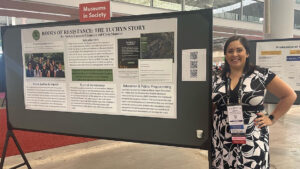
Dr. Anne Parsons is the graduate advisor for UNCG’s History/Museum Studies master’s program, so she knows how much of a boon a Smithsonian internship will be to whatever future career these students choose.
“This will help them stand out from the crowd,” she says. “Many of our students are interested in working at historic sites, museums, libraries, and archives. The Smithsonian offers them in-person best practices for museum accessibility, engagement of diverse audiences, and collections management. They’re working directly with curators and professionals and networking with the staff. This is a hub for professionals at the top of their field.”
She says her students did a phenomenal job of making themselves stand amid the stiff competition with applicants from around the U.S.
For example, Lascarez Casanova worked with graduate students to build the traveling exhibition “Roots of Resistance: The Tuchyn Story” — which showcases Jewish resistance during the Holocaust. She presented the exhibit to national conferences and was accepted at the National Council on Public History, the American Alliance of Museums, and the American Historical Association, three of the most prestigious conferences in the field.
Internships across the U.S.
2022 was a particularly successful year for UNCG students gaining on-the-job experience.
“We have one student who interned at the Alaska State Museum,” says Dr. Parsons. “One student was at the National Council of Historic Preservation Education. One did an innovative internship with the City of Raleigh Parks Department.”
Dr. Parsons built the internship application process into her classes to help students secure those coveted spots. In The Practice of Public History, they research which available internships will best serve the career path they want, and she guides them through the application requirements.
“Our curriculum is very rigorous,” she says. “Students’ projects directly serve the community. They work on the curation of traveling exhibits, build story maps online, and work on collections preservation. Everything they do is incredibly hands-on, so when they graduate, they have a strong resume.”
Cooper encourages future students who come through the program to have confidence in themselves and their place in the field. “You belong there because someone saw your potential and gave you a chance,” he says. “Now you have to show the world your worth.”
Lascarez Casanova says UNCG gives students incredible practical and networking opportunities, many of which are free or low cost. “Take advantage of all the digital workshops that the Digital Media Commons offers — they can be the difference between getting hired or getting overlooked.”
Story by Janet Imrick, University Communications
Photography courtesy of John Cooper, Saskia Lascarez Casanova, and the Smithsonian Institute
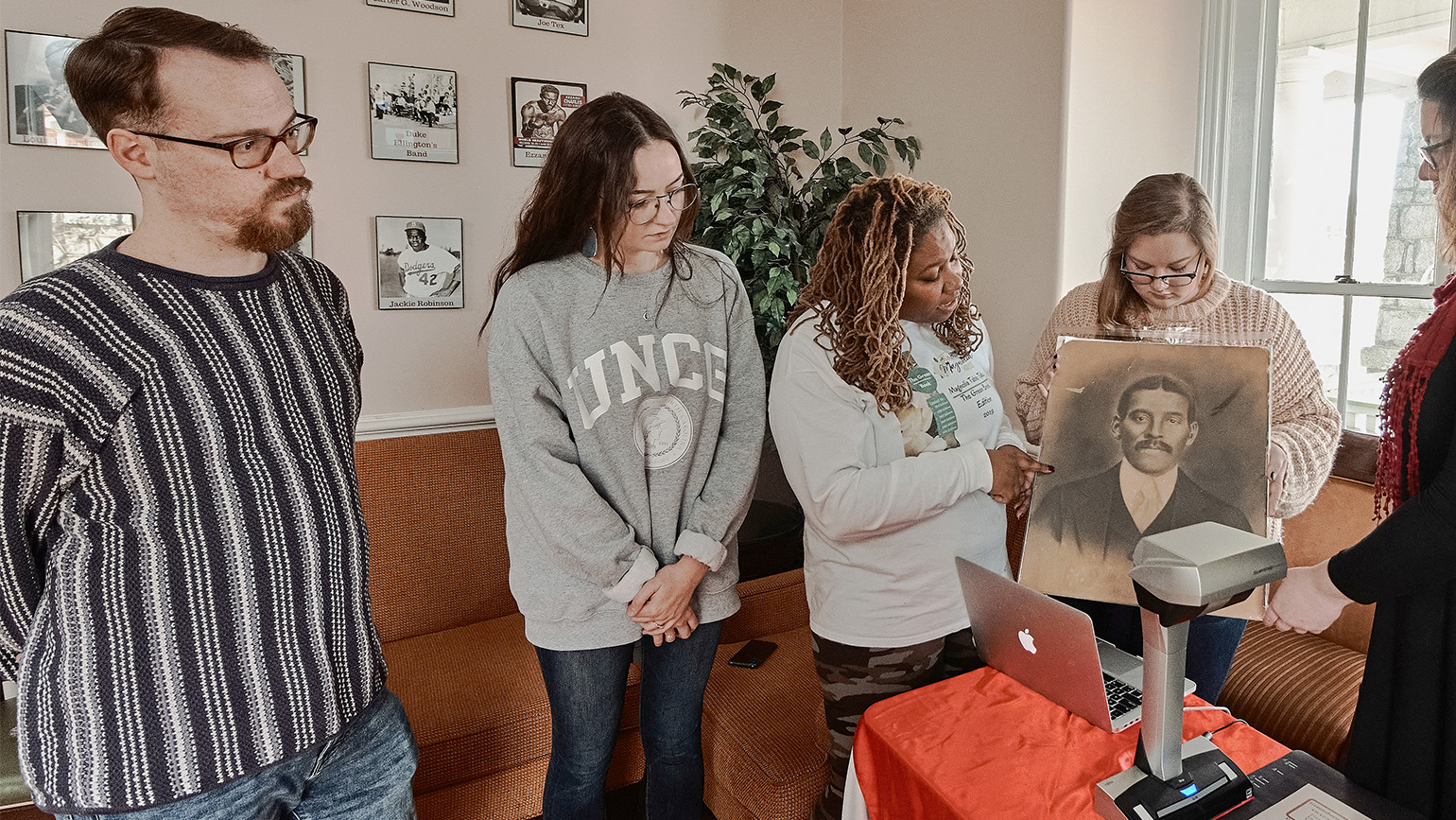
Explore students’ Museum Studies projects
Just theorizing about how to reach communities isn’t enough. Every semester UNCG students complete projects, start-to-finish, that make a difference in our region.
